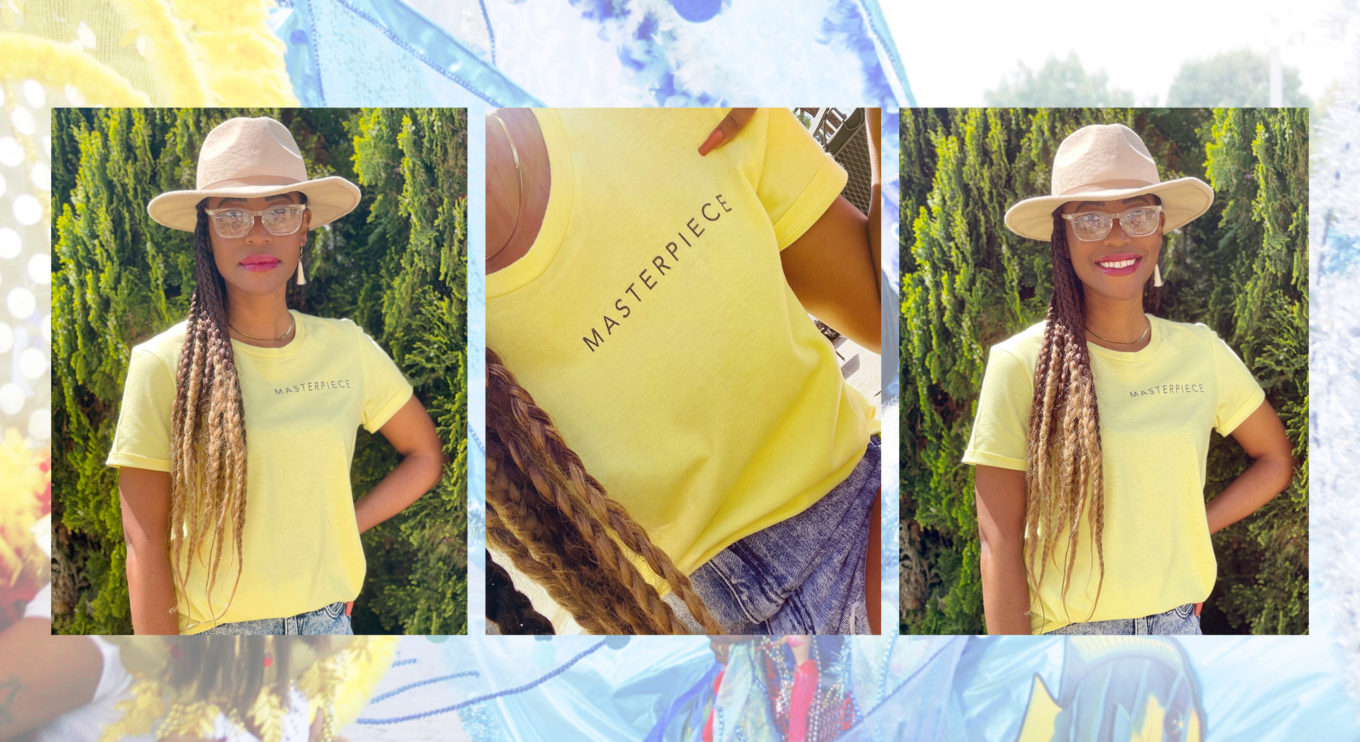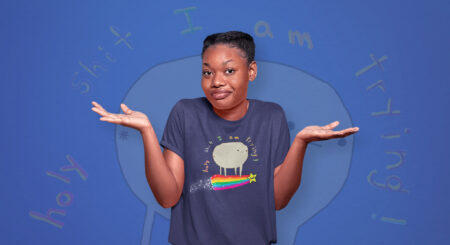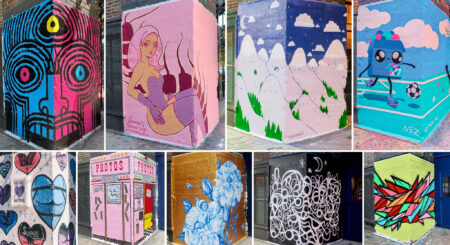Southern California–based photographer Teanna Woods Okojie captures the spirit of Black youth culture. Ever since she first picked up a camera, she’s been creating portraits of Black life, from beach scenes to pensive women to families and trips abroad to Africa.
She calls herself an “ethical storyteller” who partners with her subjects to tell a story together with consent and in good spirit. Her body of work brings out the honesty and reality of each scene she captures. In a series with Teach for Nigeria, her photos look into the education system in southern Nigeria, showing children attending class and smiling big. Meanwhile, In Our Own Words highlights the voices of Black women through oral and written storytelling and portraits.
Recently, she released a long-term photography series entitled Sacred Faith, which looks inside the Celestial Church of Christ in the mountains of Ogun State, Nigeria. She also participates in Black Women Photographers, a platform founded by Polly Irungu that brings together an incredible mix of Black women photographers of all ages.

You can find a curated collection of her work available for sale at San Diego Art Institute’s Regional Artists Market, as well as in her Threadless Artist Shop. Some of her most stunning pieces include the beachy “Black Boy Joy” and the vibrant “Queens, New York.” Offering insight into her world as a photographer, Woods spoke to Threadless about the magic of Lagos, her spring collection, and the photographers she looks up to the most.
What do you love most about working in documentary photography?
Teanna Woods Okojie: The connections I make with the incredible individuals and families I meet. I gain so much from each story they share with me, each challenging journey they’ve overcome, and how they’re making it through whatever circumstance lies before them. I started my photography journey in the children and teens fashion/lifestyle industry. In 2014, I began my transition into the documentary/humanitarian field. I recently realized I’d always been telling stories through my work. So the transition into documentary/humanitarian photography has only opened my heart more deeply toward visual storytelling. It honestly feels like the highest honor to be given the opportunity to tell remarkable individuals’ personal stories.
What is ethical storytelling to you, at least visually?
Visual ethical storytelling to me begins with collaboration with my subject. We are telling their story together; their consent is the highest priority. I wrote an article, “The Need for Ethical Representation in Documentary Photography,” which discusses ethical codes of visual communication. In the article I share my perspectives on how this plays out in our everyday lives. I wrote:
“We are living in a time when we’re all storytellers. While you may not be a professional visual artist, by simply having a camera/video on your cell phone you too have the power to tell a story. Every image we post throughout our communities makes an impression, receives a reaction, and creates a narrative.”
Storytelling shapes narratives of individuals and communities. When those narratives are inaccurate and subjects are depicted negatively, it greatly impacts perceptions of the individuals and the communities they represent. Accurate coverage is critically important in combating misrepresented narratives.

Why is showing cultural diversity so important to you as a photographer?
It’s been the central focus of my work since I picked up a camera. It wasn’t initially intentional. Growing up in southern California, I was exposed to all types of cultures and religious beliefs. I was immersed in diversity and I believe that subconsciously shows through in my photographs. It’s important that cultural diversity exists in my work because it’s a true reflection of what the world looks like. Its importance stems from a lack of ethical and accurate depiction of culturally diverse individuals/people groups.
Through visual storytelling I’m able to convey an array of differences in people from different walks of life. While our lives are different, we are all inhabiting the same world. Often, my viewer may never visit a particular country or continent or may have not been exposed to ethical representation of a diverse group of people. Through my imagery, I’m able to provide ethical and accurate depictions of the subjects in a personal connective way. Without showing these wide forms of cultural diversity, it limits our ability to understand the world in which we all live.
What did you learn while shooting in Lagos?
I’m not sure if I can ever fully articulate all I’ve gained from having the opportunity to photograph in Lagos. I’ll try my best. I’ve learned to slow down and really observe everything around me. To release inaccurate western perspectives and gain insight from the individuals who actually live their reality day to day. I’ve learned to let go of my initial plan(s) and be ready to switch gears and still produce beautiful imagery. Unlearning false narratives and negative stereotypes. The layers of misrepresentation of African life being depicted to the western world, runs much deeper than I’d been prepared for. There’s much more that I’m still learning, I hope to remain a lifelong learner.
What do you think about the female gaze in photography? How is your view different?
Women in art is essential. Our perspectives through photography are paramount. Our gaze reflects a deep humanity that our world desperately needs today. When I think of images from the past, created by women, those images are powerful and impactful. Women have created some of the most important images in the photography industry to date. My individual experiences have molded my gaze. My view is different based on how my identity was uniquely created as a Black American woman. What I’m not always able to articulate through words is expressed through my photographs.
Where and when did you hold the photo shoot that gave us “Queens, New York”?
I took this image in 2013 at an annual Carnival festival for children at Flushing Meadows Corona Park. I was shooting on assignment that day but managed to capture a few images for my portfolio.
What about the piece called “Standing”?
“Standing” is an image that moves me still today. I was with my husband, who is a professional videographer, in a small village in southern Nigeria. We were working on a project centered around the Benin Kingdom. It was raining off and on the entire day so at moments we had downtime. I captured this image by chance. Meaning it was not a part of any particular series I was working on. I go into a bit more detail about the images captured that day on my website.
Who are your favorite photographers today, and why do you look up to them?
I gain inspiration from a myriad of photographers, those living and who’ve passed on. The foundation of my inspiration comes from traditional styles of portraiture. A few of my favorites are; Dorethea Lange, Diane Arbus, Gordon Parks, Maryellen Mark, Julia Maragret Camron, Harry Callahan, Eric J.Shelton, Adama Kouyaté and Lorna Simpson. Over the past few years, I have been moved to tears by a collective group of images from professional and nonprofessional photographers called, “The Black Archives Collective,” which captures and spotlights the black experience. Each of the photographers I listed, resonate with me in a different way. I feel collectively these photographers use patience as their main focus for obtaining their shot. No image feels rushed, everything is natural, and the subjects present themselves quite openly to each photographer.
Like with most art forms, as an amateur photographer, initially you’re stumbling around sort of photographing anything that moves. As you develop in your craft, you learn to wait, to be extremely observant, to listen, and when to put your camera down and connect with your subject.
Will you add anything new to your Threadless shop this spring or summer?
Yes, I just launched a few new designs and have three more I will release through the spring—my collection entitled “Spring Essentials.” I decided to branch out and create a few spring designs that do not include imagery or text, with the exception of one redesign. I absolutely love tie-dye. To me, it’s a true fashion classic. I’m happy to see so many young people embracing it as a classic design style. I decided to try my hand at a few tie-dye-inspired designs, which I created in Photoshop using Creators Couture’s incredible brush templates. I’m very excited to share these designs within the T.Woods Artist Shop’s community and globally.
Featured design is “Masterpiece, Just as You Are” by Teanna Woods, photographed by Peter Okojie.






